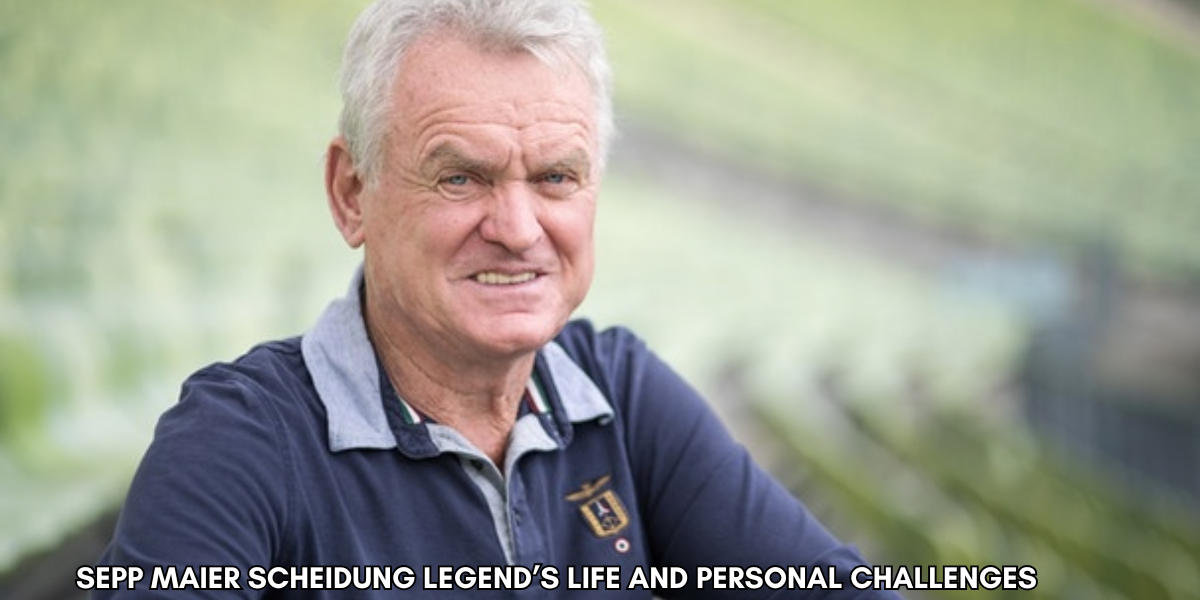Sasuke Uchiha, one of the most complex characters in the Naruto series, has captivated audiences with his intriguing evolution from a vengeful avenger to a more reflective, heroic figure. His journey, filled with internal battles, shifting allegiances, and profound personal struggles, serves as one of the central arcs of the entire series. The keyword Sasuke:xxtr_Kn9ifu= Naruto signifies not just his relationship with the titular character, Naruto Uzumaki, but the multifaceted nature of Sasuke’s development. This comprehensive blog post will explore Sasuke’s transformation throughout Naruto, focusing on his emotional growth, personal motivations, and ultimate redemption.
Through the lens of Sasuke:xxtr_Kn9ifu= Naruto, we will analyze Sasuke’s role as both a rival and a reluctant ally, examining his decisions and actions from the beginning of the series to the end. By understanding Sasuke’s journey, we gain insight into the themes of friendship, revenge, loneliness, and self-identity that permeate Naruto. Let’s embark on this exploration of Sasuke’s character and the key moments that shaped his transformation.
Early Life and Tragedy: The Foundation of Sasuke’s Hatred
Sasuke’s story begins with tragedy. Born into the prestigious Uchiha clan, Sasuke lived a relatively peaceful life as a child. However, everything changed when his older brother, Itachi Uchiha, massacred their entire clan, leaving Sasuke as the sole survivor. This traumatic event shattered Sasuke’s world and sowed the seeds of his intense hatred and desire for revenge. Sasuke:xxtr_Kn9ifu= Naruto is rooted in this painful memory, as Sasuke’s quest for vengeance against Itachi becomes the driving force behind his actions for much of the series.
The intense trauma caused by the death of his family caused Sasuke to shut himself off emotionally. His singular focus on avenging his clan led him to train relentlessly, distancing himself from others. This journey of isolation and bitterness contrasted with Naruto’s own background. While Naruto had a support system in his friends and mentors, Sasuke’s path was one of solitude, marked by his inner turmoil and a growing resentment of those around him. It was in these early moments that Sasuke began to question his place in the world, with the shadow of his past constantly looming over him.
Sasuke and Naruto: Rivals with a Shared Pain
From the beginning, Sasuke and Naruto are positioned as rivals, though their motivations differ greatly. Sasuke’s initial cool, aloof demeanor contrasts sharply with Naruto’s boisterous and optimistic personality. Yet, despite their differences, the two characters share something deep and profound: a sense of loneliness. Both Sasuke and Naruto are outcasts—Naruto due to the Nine-Tails Fox sealed within him, and Sasuke due to the murder of his entire family.
In many ways, Sasuke= Naruto explores the idea of rivalry as a way of dealing with pain. Sasuke’s relationship with Naruto is complex. While Sasuke initially looks down on Naruto as an inferior, Naruto becomes a source of rivalry, motivation, and eventually, emotional conflict. Their friendship develops as a result of their rivalry, with each pushing the other to grow. Naruto’s unwavering belief in Sasuke, especially as the latter grows more distant, contrasts with Sasuke’s growing resentment and desire for power. Their rivalry transcends mere competition; it becomes a struggle for emotional and psychological growth, pushing Sasuke toward eventual self-reflection.
The Path of Darkness: Sasuke’s Descent into Vengeance
Sasuke’s decision to leave Konoha and join Orochimaru marks a significant turning point in his character arc. Feeling betrayed by his comrades and frustrated with his inability to gain power through conventional means, Sasuke seeks to gain strength by aligning himself with Orochimaru, a dangerous rogue ninja. This decision is rooted in Sasuke’s overwhelming need for vengeance. His belief that only through greater power could he defeat Itachi drives him further away from Naruto and the rest of his friends.
The journey with Orochimaru represents Sasuke’s spiral into darkness. His motivations shift from seeking justice to becoming consumed by his desire for revenge, as he becomes willing to forsake everything, including his own humanity, in order to achieve his goal. His training with Orochimaru grants him immense power, but it also makes him increasingly isolated and ruthless. In his mind, the only thing that mattered was avenging his clan, and anyone who stood in his way—Naruto included—was an obstacle to his ultimate goal.
The consequences of Sasuke’s actions during this period are significant. His decisions alienate him from his former friends, and his rivalry with Naruto deepens. Sasuke:xxtr_Kn9ifu= Naruto now shifts from a battle for power to a more emotional confrontation, where the bonds between the two characters are tested to their limits. Sasuke’s descent into vengeance culminates in the fight with Naruto at the Valley of the End, where the two engage in an emotionally charged battle that highlights Sasuke’s inner turmoil and Naruto’s unyielding desire to bring his friend back.
The Awakening: Sasuke’s Conflict Between Revenge and Redemption
After Sasuke’s confrontation with Naruto, he begins to experience moments of doubt. Though he is determined to become stronger and fulfill his quest for vengeance, Sasuke is not entirely immune to the feelings of camaraderie that he once shared with Naruto and his friends in Konoha. However, the deep scars of his past and his obsession with revenge continue to haunt him, making it difficult for him to fully accept the possibility of redemption.
In this phase, Sasuke’s relationship with Naruto intensifies, as Naruto becomes a symbol of everything Sasuke has abandoned—friendship, loyalty, and hope. But Sasuke cannot escape his dark past, and his emotional journey is marked by inner conflict. He resists Naruto’s attempts to reach him, but deep down, he is torn. This struggle within Sasuke reflects a core theme of Naruto: the conflict between personal desires and the importance of human connection.
It is during these moments of reflection that Sasuke begins to question whether vengeance truly brings fulfillment. Sasuke’s transformation becomes clear when he begins to realize that revenge, which once seemed like the only answer, has only deepened his suffering. The realization that there is more to life than just hatred becomes the key to his eventual redemption.
The Final Confrontation: Sasuke’s Return and Redemption
The climax of Sasuke’s transformation occurs when he finally faces his brother, Itachi. The long-awaited battle between the two Uchiha brothers takes place under the most dramatic of circumstances. Sasuke, armed with years of rage and determination, finally confronts Itachi—but the truth that he uncovers shatters his perception of everything he has fought for.
Itachi’s true motivations, revealed during their battle, are not what Sasuke expected. Itachi sacrificed everything, including his own life, to protect Sasuke and Konoha. Itachi’s death, although seemingly an act of vengeance, is revealed to be a final act of love, a desperate attempt to leave Sasuke a legacy that would free him from the darkness that had consumed their clan. The revelation forces Sasuke to confront the futility of his quest for revenge.
Sasuke’s realization marks the turning point in his transformation. No longer consumed by hatred, Sasuke begins to move toward a more balanced understanding of himself and the world around him. He is still haunted by his past but has learned to embrace his future. Sasuke returns to Konoha, not as a villain or as a powerful avenger, but as a man who has accepted his flaws, his pain, and his need for human connection.
The resolution of Sasuke’s character arc is one of the most powerful elements of the Naruto series. His redemption, while hard-earned, is ultimately a triumph of understanding over vengeance. The Sasuke= Naruto connection is essential here, as Naruto’s unwavering belief in his friend is what helps Sasuke break free from the chains of his past and find peace.
Sasuke’s Role in the Shinobi World: A Legacy of Growth and Responsibility
After his redemption, Sasuke plays a crucial role in the resolution of the Fourth Great Ninja War, standing side by side with Naruto to protect the world. His actions during the war demonstrate the full extent of his growth. He is no longer the vengeful child who sought power at any cost but a wise, thoughtful shinobi who understands the importance of protecting others and creating a future for the next generation.
Sasuke’s role in the final stages of the series underscores the series’ central themes of growth, responsibility, and the importance of human connections. Sasuke’s journey from vengeance to redemption is not just about him becoming a better person but also about him understanding the complex nature of relationships, sacrifice, and responsibility.
Sasuke and Naruto: The Yin and Yang

Sasuke and Naruto’s relationship is often portrayed as a reflection of the concept of Yin and Yang, the ancient Chinese philosophy that describes how seemingly opposite forces are interconnected and interdependent in the natural world. In the Naruto series, Sasuke and Naruto represent two halves of a whole, each embodying opposing characteristics that complement each other, creating a powerful dynamic throughout the story.
Naruto is the embodiment of optimism, perseverance, and a deep desire for connection, even in the face of rejection and hardship. He represents the Yang—the bright, energetic force that drives him to form bonds and never give up on his friends. Sasuke, on the other hand, is the Yin—he is brooding, introspective, and often isolated, focused on his revenge and driven by a sense of loneliness. Where Naruto thrives on relationships, Sasuke finds strength in solitude, though he is ultimately yearning for something deeper.
Their rivalry, which starts from a place of mutual misunderstanding, gradually evolves into a profound bond, highlighting how opposites can be integral to each other’s growth. Just as Yin cannot exist without Yang, Naruto cannot fulfill his potential without Sasuke, and Sasuke cannot understand his path to redemption without Naruto’s unwavering belief in him. This balance between them drives the narrative and forms the emotional core of the series.
Also read: VJIT Student Login | Wallpaper:hjotduwi72m= Thanksgiving | woman:yzugckinmmk= beach Guide
Conclusion: Sasuke:xxtr_Kn9ifu= Naruto
Sasuke Uchiha’s transformation in Sasuke:xxtr_Kn9ifu= Naruto is one of the most compelling aspects of the Naruto series. His journey from a vengeful, isolated figure to a redeemed, responsible hero highlights the series’ themes of pain, growth, and friendship. Sasuke’s story is a testament to the complexity of human nature, showcasing the internal battles that everyone faces when confronting their past, their desires, and their relationships with others.
From the pain of his family’s massacre to the final battle with Naruto, Sasuke’s journey encapsulates the struggle for identity, purpose, and redemption. His character arc is not just about defeating an enemy but about reconcil
FAQ:about Sasuke:xxtr_Kn9ifu= Naruto
1. What is Sasuke’s relationship with Naruto?
Sasuke and Naruto share a complex relationship that evolves throughout the series. Initially, they are rivals, with Sasuke being the more skilled and aloof ninja while Naruto is the enthusiastic underdog. Over time, their rivalry turns into a deep bond, with Naruto constantly trying to bring Sasuke back to the right path, even after Sasuke chooses to leave Konoha. Their connection is fundamental to the series, representing themes of friendship, rivalry, and redemption.
2. Why does Sasuke leave Konoha?
Sasuke leaves Konoha in search of power, believing that it is the only way he can get revenge on his older brother, Itachi. Frustrated by the limits of his strength and feeling betrayed by his village, Sasuke joins Orochimaru, a rogue ninja, to gain the necessary power to defeat Itachi. This decision marks a significant turning point in Sasuke’s character arc, driving a wedge between him and his friends.
3. What motivates Sasuke throughout Naruto?
Sasuke is primarily motivated by revenge against his brother, Itachi, who massacred the Uchiha clan. His desire for vengeance is his driving force for much of the series. However, after learning the truth about Itachi’s actions, Sasuke’s motivations shift. He starts questioning the meaning of revenge and begins searching for a different purpose, eventually seeking redemption and a way to make amends for his past decisions.
4. What is the significance of Sasuke’s battle with Naruto at the Valley of the End?
The battle between Sasuke and Naruto at the Valley of the End is one of the most significant moments in Naruto. It represents the culmination of their rivalry and the emotional conflict between the two characters. Sasuke’s decision to leave Konoha and his belief that he must sever ties with everyone in order to gain the power to avenge his clan leads to this intense confrontation. The fight also highlights Naruto’s unyielding desire to bring Sasuke back, despite Sasuke’s insistence on walking his own dark path.


